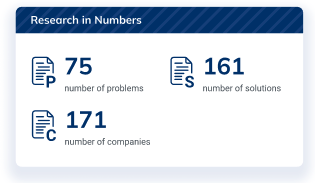
 Traditional banking services are no longer the only way to handle funds in the digital age. With the rise of fintech and innovative financial technology, businesses seeking to provide customers with financial services now have two new options:
Traditional banking services are no longer the only way to handle funds in the digital age. With the rise of fintech and innovative financial technology, businesses seeking to provide customers with financial services now have two new options:
- Embedded Finance
- Banking as a Service (BaaS)
Both techniques permit non-financial organizations to provide financial services to their consumers. However, their implementation and scope are distinct.
What is Embedded Finance?
The incorporation of financial tools or services is known as embedded finance; specifically, services or equipment formerly purchased through a bank.
Embedded Payments Examples
Embedded payments make life easier for consumers and businesses. Embedded payments enable instant payments at the touch of a button. Here are a few examples:
- App/E-commerce Sites: Buyers don’t have to enter their credit card details for every transaction
- Rideshare Apps: Utilization of embedded payments where customers don’t have to pay cash or use credit cards
- Digital Wallets: Enable contactless mobile transactions
Embedded Lending
Embedded lending, also known as BNPL, is a growing B2B BNPL sector that gives firms access to an enhanced digital version of conventional trade credit, eliminating the need for tedious paperwork and lengthy approval delays.
Embedded Insurance
In the past, a buyer seeking to insure a new purchase had to go through a lengthy process of locating and acquiring the finest insurance plan available. They may only discover the product once they have expended much time, money, and effort.
What is Banking as a Service (BaaS)?
BaaS is a revolutionary model that has enabled non-banks to offer access to standard banking products or features. BaaS allows companies to provide financing through licensed access.
The emergence of BaaS has brought about the creation of virtual banks without any physical presence. These banks focus on providing a user-friendly front end and use licensed bank systems to handle the back-end banking operations.
Lending as a Service
Lending as a Service allows customers to borrow money for various purchases and investments without going through the traditional banking system. This is beneficial for both lenders and borrowers for the following reasons:
- It allows lenders to offer more competitive rates and terms than they would generally be able to.
- The process is automated; it can be done quickly and with minimal paperwork.
Lending as a Service has been particularly helpful for small business owners. By utilizing this service, they can access the funds they need to expand their businesses and grow their customer base.
Payments as a Service
Payments as a Service (PaaS) provides an integrated platform for companies of all sizes to do the following:
- Securely and cost-effectively process payments
- Help organizations reduce costs associated with payment processing
Embedded Finance VS. Banking as a Service (BaaS) – What’s the Difference?
Embedded finance and BaaS are interdependent. BaaS enables embedded finance to deliver integrated consumer lending. Embedded finance uses BaaS’s end-to-end concept to provide novel funding. This symbiotic interaction helps both succeed.
However, embedded finance and BaaS have distinct characteristics that make them unique. They are as follows:
- Consumer-facing Business: Embedded finance lets consumer-facing firms offer loans and insurance without clients having to go elsewhere. This buying process simplification improves customer experience and sales. BaaS lets digital and non-digital banks offer financial services outside of product purchases.
- Front-end vs. Back-end: BaaS focuses on digital banks’ and non-banks’ back-end banking capability, while embedded finance focuses on front-end financial services.
- Branding: Consumers can typically determine that embedded funding is from an external bank. The front-end provider communicates with consumers in BaaS, hiding the banking system.
- Conversions: Today’s customers require BaaS-based digital banking solutions. Long-term and thorough. Embedded finance, on the other hand, contributes to single transactions and drives conversions by keeping clients linked to the firm until the sale is closed.
What are the Disadvantages of Digital Finance?
Embedded finance and BaaS do not come without their risks. The digital finance world has brought various risks that should be taken into consideration. Here are a few of the most dynamic risks associated with digital finance:
- Data Breaches: The increased use of digital platforms has rendered financial institutions. It has made them more susceptible to breaches and cyberattacks. Potentially putting businesses in a direct line of compromisation of sensitive consumer data.
- SIM Swap Fraud: Robbing banks just got a little easier. SIM Swap Fraud is when a mobile phone number is stolen and used to access financial accounts.
Liability allocation risk: It has become more difficult to assign blame when things go wrong.
Sources
- https://www.mckinsey.com/industries/financial-services/our-insights/banking-matters/what-the-embedded-finance-and-banking-as-a-service-trends-mean-for-financial-services
- https://cloud.google.com/blog/topics/financial-services/managing-consent-in-embedded-finance
- https://www.ringcentral.com/us/en/blog/embedded-finance-vs-banking-as-a-service-baas-whats-the-difference/
- https://www.bain.com/insights/embedded-finance/
- https://medium.com/balderton/whats-next-for-european-banking-as-a-service-cc1556ead27a
- https://www.juniperresearch.com/document-library/white-papers/the-rise-of-baas-(banking-as-a-service)
- https://www.bain.com/insights/embedded-finance/
- https://www.cgap.org/blog/evolving-nature-and-scale-of-consumer-risks-in-digital-finance

